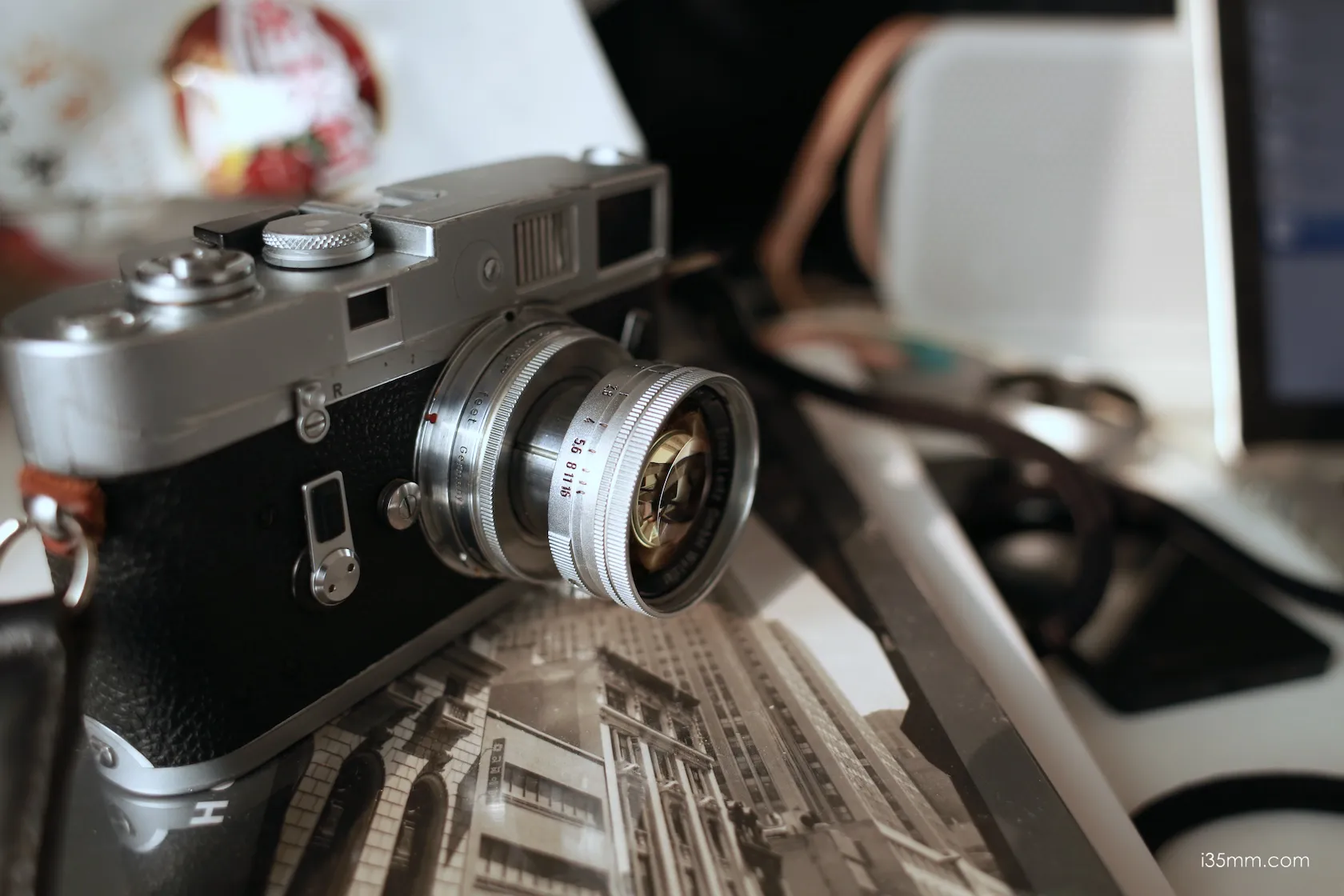Prologue: When Radiation Meets Poetry
Imagine if Van Gogh’s Starry Night were forged into glass—glowing with eerie beauty, unapologetically imperfect. The 1956–1968 Leica Summicron 50mm f/2 Collapsible “Yellow Glass” (aka Radioactive Cron) is photography’s answer to a vintage whiskey: aged, complex, and slightly dangerous. Priced at 1,500–1,500–12,000 (2025 USD), this 200g brass-and-thorium relic defies modern logic. Born in an era when engineers played God with radioactive elements, it’s the James Dean of lenses—rebellious, iconic, and forever young.

Design: The Mad Scientist’s Blueprint
- Toxic Cocktail
- Glass Recipe: 3 lanthanum layers + 1 thorium core + 1 lead-infused rear element—a periodic table party banned by 1980s environmentalists.
- Collapsible Sorcery: Folds like a pocketknife, weighs less than a paperback.
- The “Yellowing” Phenomenon
- Thorium decay tints the glass like aged Scotch, casting a golden haze. Fear not:
- Digital: Auto white balance neutralizes it—no Instagram filter needed.
- Film: Kodak Ektachrome laughs at the tint; Fuji Pro 400H embraces it as “vintage warmth.”
- Thorium decay tints the glass like aged Scotch, casting a golden haze. Fear not:
Optical Alchemy: HCB’s Secret Weapon
| Aspect | Yellow Glass Summicron | Modern APO-Summicron |
|---|---|---|
| Sharpness | Hemingway’s prose—direct but soulful | ChatGPT precision |
| Contrast | Morning fog over the Seine | High noon in Death Valley |
| Bokeh | Monet’s brushstrokes | CAD-rendered circles |
| Radiation Charm | ☢️☢️☢️☢️☢️ | 🤖 |
- Low-Light Wizardry: Thorium glass absorbs UV/IR, rendering twilight scenes like Rembrandt’s chiaroscuro. Henri Cartier-Bresson’s shadowy Parisian alleys? Thank radioactive decay.
- Skin Tones: Renders complexions like honey-drizzled marble—flaws softened, humanity amplified.
Myth-Busting: Radiation & Risks
- Health Fears:
- Fact: The dose is weaker than a transatlantic flight. Sleeping with it under your pillow for 50 years ≈ 1 dental X-ray.
- HCB Proof: The man shot with it into his 90s. (Though he probably swapped lenses more than socks.)
- Film Damage:
- Leaded rear glass blocks 99% of radiation. Leave a roll in your M3 for a year? You’ll get slightly vintage fog—call it “free VSCO preset.”
Shooting Experience: Time Travel in Your Palm
- Digital Love Affair
- On a Leica M11, it’s Ansel Adams meets Wes Anderson—sharp yet nostalgic. Disable profiles; let its golden flaws dance.
- Film Romance
- Tri-X @1600 + this lens = film noir reborn. The thorium glow caresses grain like a jazz saxophonist.
- The “Three Miracles”
- f/2: A dream sequence—soft focus becomes artistic intent.
- f/4: Suddenly sharper than a New Yorker’s wit.
- f/8: Reveals CCD-like microcontrast (Leica M8 owners, rejoice).
Who Needs This Lens?
✓ Poets with Light Meters: Who see grain as texture, not noise
✓ Vintage Alchemists: Collecting radiation like rare spices
✓ Contrarians: Who’d choose a vinyl crackle over Spotify HD
Avoid If: You shoot weddings, fear EPA audits, or think “AI bokeh” is progress.
Final Verdict: The Forbidden Fruit
The Radioactive Summicron is photography’s yin-yang—harmony in opposing forces. For the price of a Rolex Submariner, you gain:
- A ticket to 1950s optical rebellion
- Proof that “dangerous” often means “unforgettable”
- Bragging rights at camera clubs (“Mine glows in the dark!”)
Rating:
🎞️🎞️🎞️🎞️🎞️ (film romantics) | 📱🎞️🎞️🤍🤍 (digital pragmatists)
“A lens that whispers: ‘True magic lies in the flaws we dare to preserve.’”
Pro Tips:
- UV Test: Shine a blacklight—watch the thorium glow like Tron’s legacy.
- Clean Carefully: Use a lead-lined cloth (kidding… mostly).
- Chinese Proverb Footnote:“毒草亦能开花”
(“Even poison weeds can bloom”—celebrating beauty in the forbidden*)
Epilogue: The Last Alchemist
In a world obsessed with clinical perfection, the Yellow Glass Summicron stands as a brass-clad rebel. It whispers: “Your camera isn’t a machine—it’s a wand.” Handle it with respect, shoot with abandon, and let its golden glow remind you: the greatest risks often yield the richest rewards. As Bresson might say, “There are no bad lenses… only boring photographers.” Now go make some beautiful trouble.


Radioactive yellow glass serial number:
NR 920×××
NR 921×××
NR 922×××
NR 993×××
NR 994×××
NR 995×××
No. 1009×××
Nr102××××
No. 104××××













